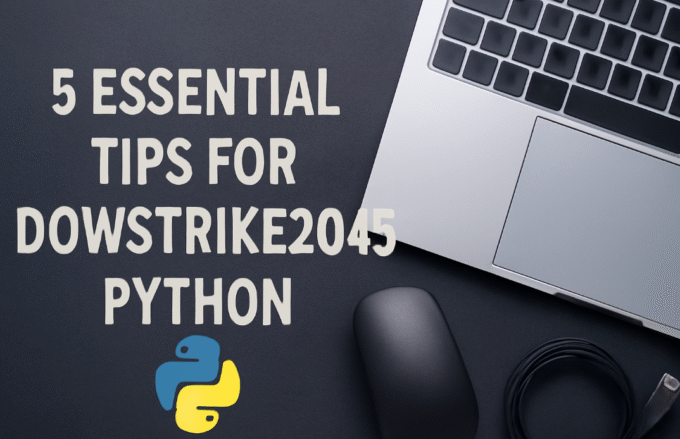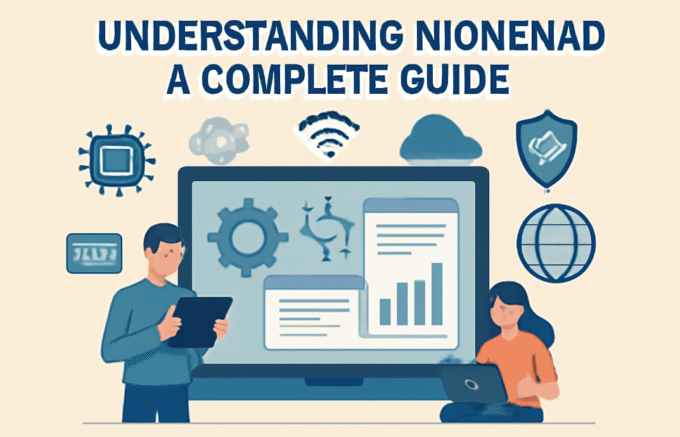We’re discussing tech giants envision future beyond smartphones today. Learn how top IT companies are redefining digital experiences with futuristic ideas, moving away from smartphones.
Introduction
Leading tech giants envision future beyond smartphones are actively influencing a future in which cellphones do not dominate human connection with technology in an era characterized by rapid technical advancement. Thanks to developments in wearable technology, augmented reality (AR), virtual reality (VR), artificial intelligence (AI), and the larger field of spatial computing, this paradigm change is not just theoretical; it is actually happening. These developments will fundamentally alter how we interact, communicate, and obtain information in our day-to-day activities.
Ambient Computing and Wearables: The Emergence of Invisible Interfaces
Wearable technology has advanced from specialized fitness equipment to complex computer systems. Businesses like Apple, Meta, and Google are making significant investments in wearable health monitoring technology, smartwatches, and AR glasses that fit in with everyday life. By offering context-aware computing, these gadgets do away with the necessity of continuously interacting with a smartphone screen.
A key component of this shift is ambient computing, which is technology that disappears into the background but is always accessible. Intelligent earbuds, voice-activated assistants, and smart home systems are just a few examples of the devices that are integrated into our surroundings and work together to provide information proactively, eliminating the need for the user to actively retrieve it via a phone.
Virtual and Augmented Reality: The Upcoming Platforms for Computing
The two main pillars of the tech giants envision future beyond smartphones age are augmented reality (AR) and virtual reality (VR). These technologies are seen by tech titans as opening doors to a more dynamic and immersive digital world.
Microsoft’s HoloLens, Apple Vision Pro, and Meta’s Quest series are all pushing the envelope in an effort to seamlessly integrate digital and real-world content. With its collaborative workplaces, real-time information overlays, and improved remote communication capabilities, these headsets and glasses are positioned as the next generation of computing platforms rather than just entertainment gadgets.
Traditional displays are anticipated to be replaced by AR glasses in particular. These gadgets promise to provide notifications, navigation, health information, and more—all inside the user’s field of vision—thanks to developments in lightweight design, battery efficiency, and AI-powered contextual computing.
Artificial Intelligence and Personal Assistant Development at Tech Giants Envision Future Beyond Smartphones
The advancement of artificial intelligence will determine the future beyond cellphones. From basic voice-activated devices to proactive, predictive, and highly customized companions, AI-driven assistants are developing quickly.
In order to predict needs, recommend actions, and automate repetitive chores across devices, these AI systems make use of natural language processing, machine learning, and user behavioral analysis. Apple’s Siri, Google Assistant, and Amazon’s Alexa are evolving from phone apps to essential parts of smart ecosystems that include wearable technology, homes, and automobiles.
With the help of AI, tech companies hope to establish a world in which technology becomes less noticeable and supports many facets of daily life in an intelligent and natural manner.
Spatial Computing: A Basis for Upcoming Communication
By fusing the digital and physical realms, spatial computing gives gadgets the ability to see and engage with their surroundings. Autonomous cars, industrial robots, augmented reality apps, and intelligent retail spaces are all powered by this technology.
Instead of using taps and swipes on a screen, tech titans are using spatial computing to create platforms that allow consumers to engage with digital information through speech, sight, and gestures. This change encourages a more organic, engaging interaction with technology by reducing need on portable gadgets.
Examples of how spatial computing is becoming tech giants envision future beyond smartphones ecosystems include Google’s advancements in AR navigation, Apple’s spatial computing initiatives, and Meta’s investments in the metaverse.
5G, Cloud Integration, and Edge Computing: Facilitators of the Post-Smartphone Era
Cloud integration, edge computing, and 5G connection are key components of the infrastructure that makes this change possible. Wearable technology, augmented reality glasses, and smart surroundings may all operate without being connected to a smartphone thanks to 5G networks, which offer the speed and bandwidth required for real-time, low-latency communication between devices.
While cloud services provide nearly infinite processing and storage capacity, allowing complex AI and AR apps to run seamlessly across several devices, edge computing brings computational power closer to the user, lowering latency and improving privacy.
In order to provide a seamless and responsive technological experience, tech giants envision future beyond smartphones by creating linked ecosystems where user data moves securely and effectively between the cloud, edge devices, and the user’s immediate surroundings.
Smart Mobility’s Role in Automotive Integration at Tech Giants Envision Future Beyond Smartphones
Infotainment systems are not the only advancements in automotive technology. Autonomous driving technology, AR dashboards, and AI-driven assistants are being integrated into cars by companies like Tesla, Apple, and Google, turning them into mobile computer centers.
By offering navigation, communication, entertainment, and productivity features without requiring a smartphone, smart cars are evolving into extensions of their owners’ digital life. This integration fits with the larger trend of ubiquitous computing, which aims to make technology less confined to a single device and more a part of our environment.
Wellness, Bio-Integrated Technologies, and Health in Tech Giants Envision Future Beyond Smartphones
One of the main forces behind post-smartphone innovation is health technology. Continuous health monitoring wearables that can measure blood oxygen levels, glucose, heart rate, and even stress levels are becoming more and more bio-integrated.
In order to avoid using tech giants envision future beyond smartphones as a middleman and provide real-time health insights to patients or healthcare professionals, tech companies are investigating implanted sensors and AI-enhanced diagnostics solutions. Examples of this movement toward proactive health management through decentralized technology include Fitbit (owned by Google), Apple’s health initiatives, and Google’s Verily.
How Prominent Technology Companies Are Setting the Standard at Tech Giants Envision Future Beyond Smartphones
The Apple
Apple is no longer only focused on improving the iPhone. They are moving toward a post-smartphone ecosystem, as evidenced by the Vision Pro headset and ongoing health-focused wearables.
The Google
From Google Glass experiments to AI integrations in homes and workplaces, Google is aggressively promoting AR and AI. In the future, their services will be available through your surroundings rather of your screen.
Meta
The metaverse is a significant investment for Meta. They think that ultimately, cellphones won’t be necessary at all thanks to virtual reality and virtual worlds.
Microsoft
With HoloLens, Microsoft is making strides in mixed reality, and by incorporating AI into business tools, they are establishing the foundation for productivity that extends beyond mobile devices.
Ethical, Security, and Privacy Issues in the Post-Smartphone Age
Security and privacy issues become more pressing as technology becomes more pervasive in our daily lives. There is growing pressure on tech titans to create safe, transparent ecosystems that put user control over data first.
To reduce dangers and foster trust, these future devices will have privacy-preserving AI models, decentralized data storage, and end-to-end encryption. Businesses understand that protecting user data across linked platforms is just as important to the success of post-smartphone technology as innovation.
FAQs
Q1: Will there be no more smartphones?
They won’t be as important right away, but as new technologies replace them, they will.
Q2: What kind of technology could take the place of smartphones?
Strong candidates include wearable technology, AI, AR glasses, and brain-computer interfaces.
Q3: When will this change take place?
Although the early stages are currently underway, it may take five to ten years for mainstream adoption to occur.
Q4: Does society benefit or suffer from this?
It depends on how we use it, just like any other technology. It could either simplify or complicate life.
Q5: Is it time for me to quit purchasing new smartphones?
Not quite yet! However, it’s worthwhile to monitor the development of IT trends.
Conclusion
It is clear from the trajectory of innovation that tech giants envision future beyond smartphones that will not be the focal point of digital life in the future. Rather, a variety of gadgets will provide smooth, context-aware computing experiences, ranging from wearables and AR glasses to smart spaces and AI-powered assistants.
Through strategic investments, cross-industry partnerships, and unrelenting innovation, tech titans are actively creating this transition rather than just forecasting it. We are getting closer to a future in which technology is ubiquitous but invisible, supporting us proactively without requiring continual attention as various technologies develop and integrate.














Leave a comment